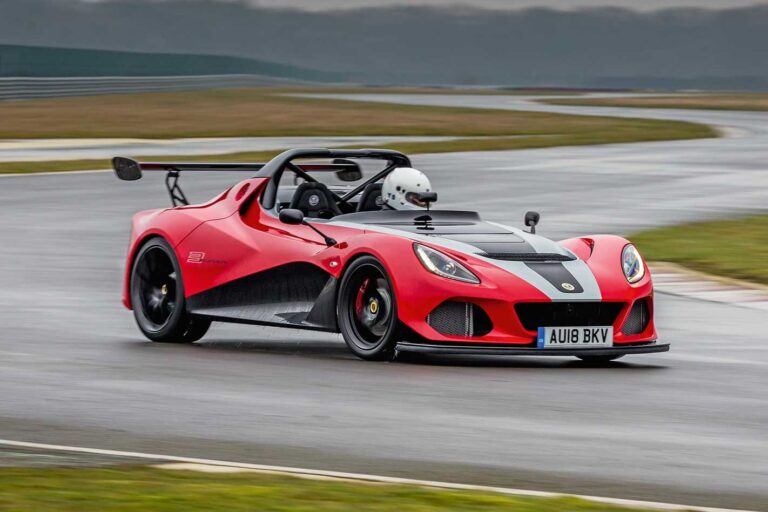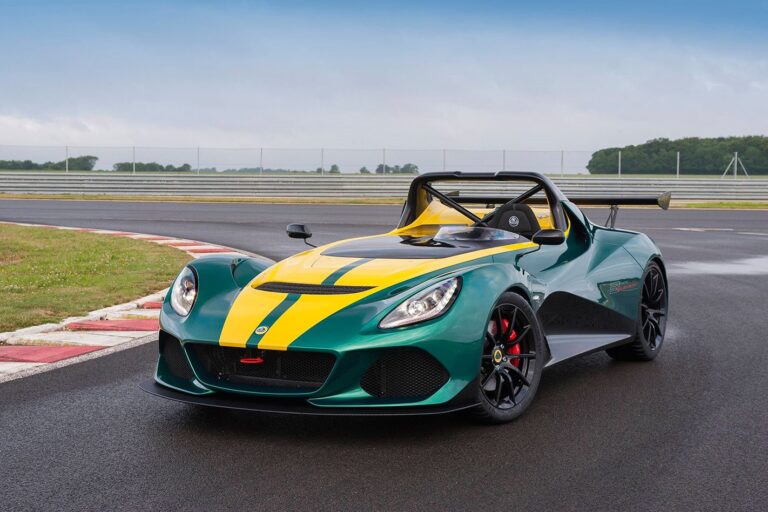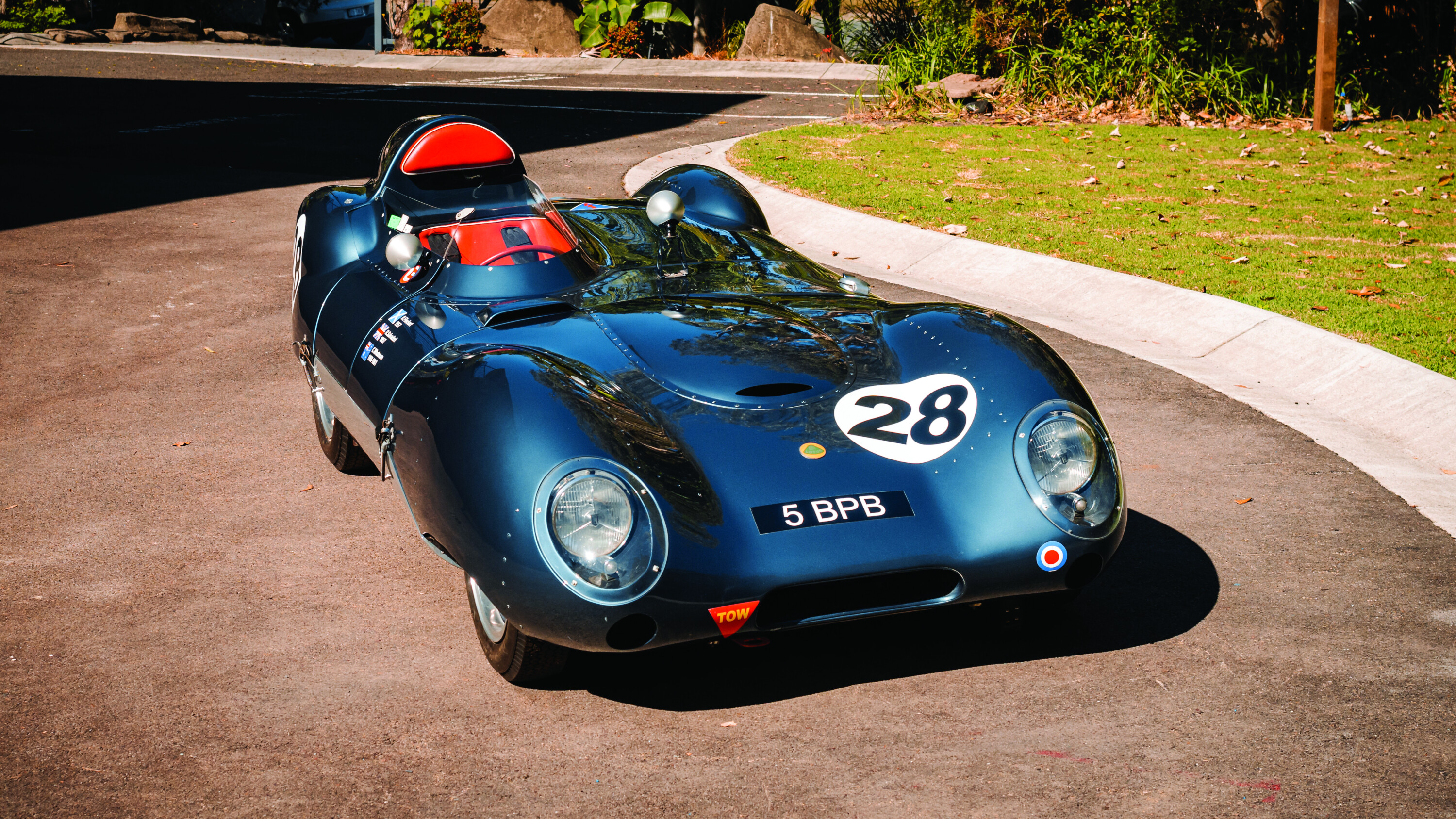
Story time.
And while you’re reading this, consider that the stunning star of this story is up for auction this week with Collecting Cars. [↗]
Lotus Engineering’s release of the Eleven in 1956 marked a significant milestone for the marque in the motorsport world. Designed by Colin Chapman and styled by Frank Costin, it was built to perform.
For some, it looked as sexy as a D-Type Jag [↗] with aluminium body panels elegantly wrapped around the frame, making it lightweight and aerodynamic. Underneath, the cleverly-engineered space frame chassis and suspension design provided superior manoeuvrability.

Weighing in at a sprightly 450kg, the Lotus Eleven [↗] was available with various engines, including a Ford 10 side-valve, 1098cc and 1460cc SOHC units, through to the punchy 1475cc DOHC FPF Coventry Climax, which powered the limited Le Mans edition.
Lotus produced 271 Elevens between 1956 to 1958 in Series One and Series Two variations. The Series Two, released in 1957, received a slightly wider chassis and upgraded double wishbone suspension.
The Eleven proved extremely competitive and campaigned across Europe’s race circuits, becoming the marque’s most successful race car.
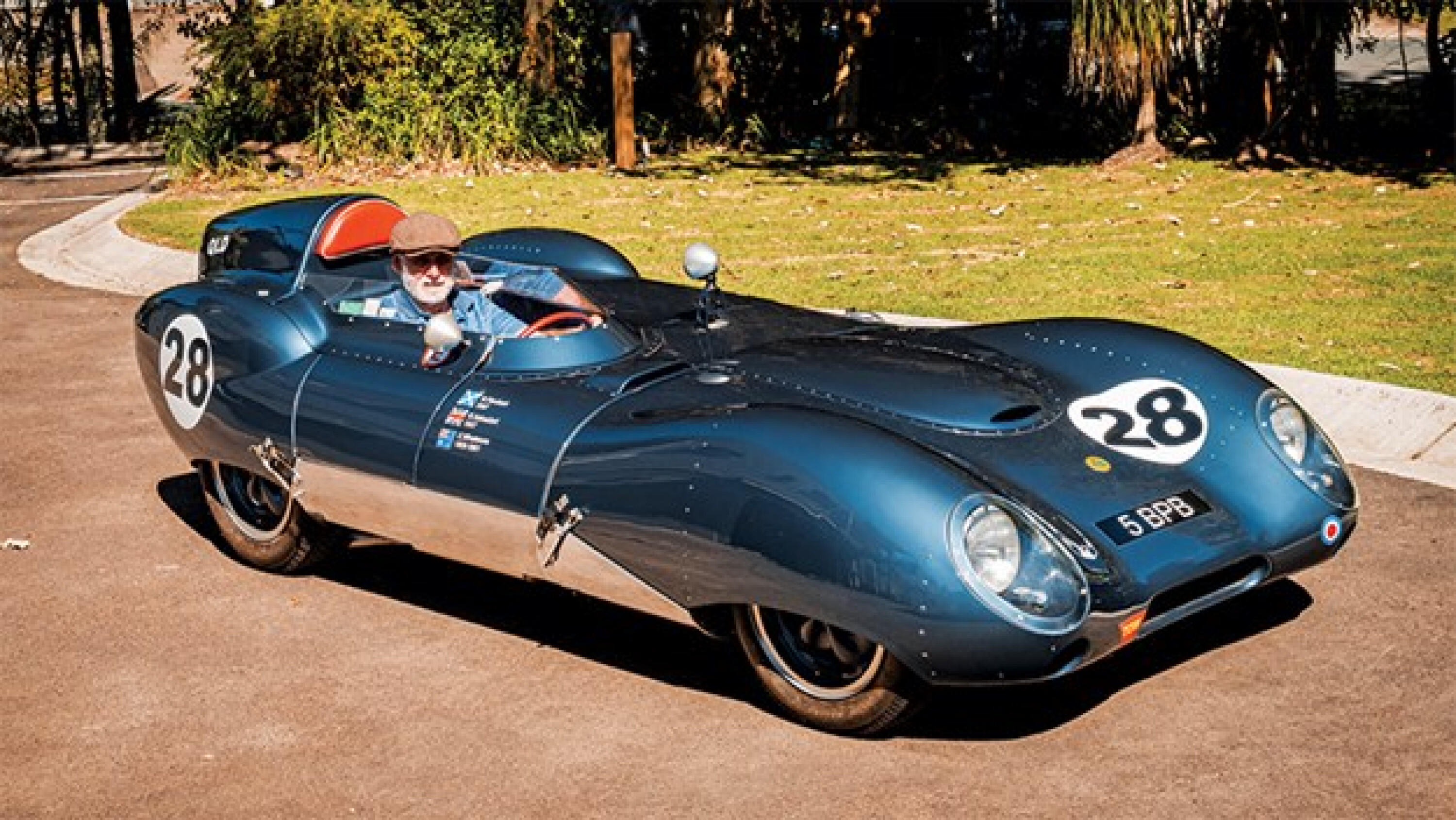
The Le Mans 150, also known as the LM150, was the rarest and most significant version of the Lotus Eleven, built for endurance racing.
With twin fuel tanks, an improved cooling system, and a strengthened chassis, the LM150 was powered by the Coventry Climax engine, producing 140-plus horsepower, making it the complete package for racing at the time.
LM150s were produced in minuscule numbers – just two were assembled by the factory. Lotus founder Colin Chapman campaigned one (chassis 322, which was later restamped as 332) in the 1956 Le Mans race with co-driver Herbert Mackay Fraser and sadly scored a DNF. That machine was sold to Carroll Shelby and raced by Jim Hall. It later returned to the UK.
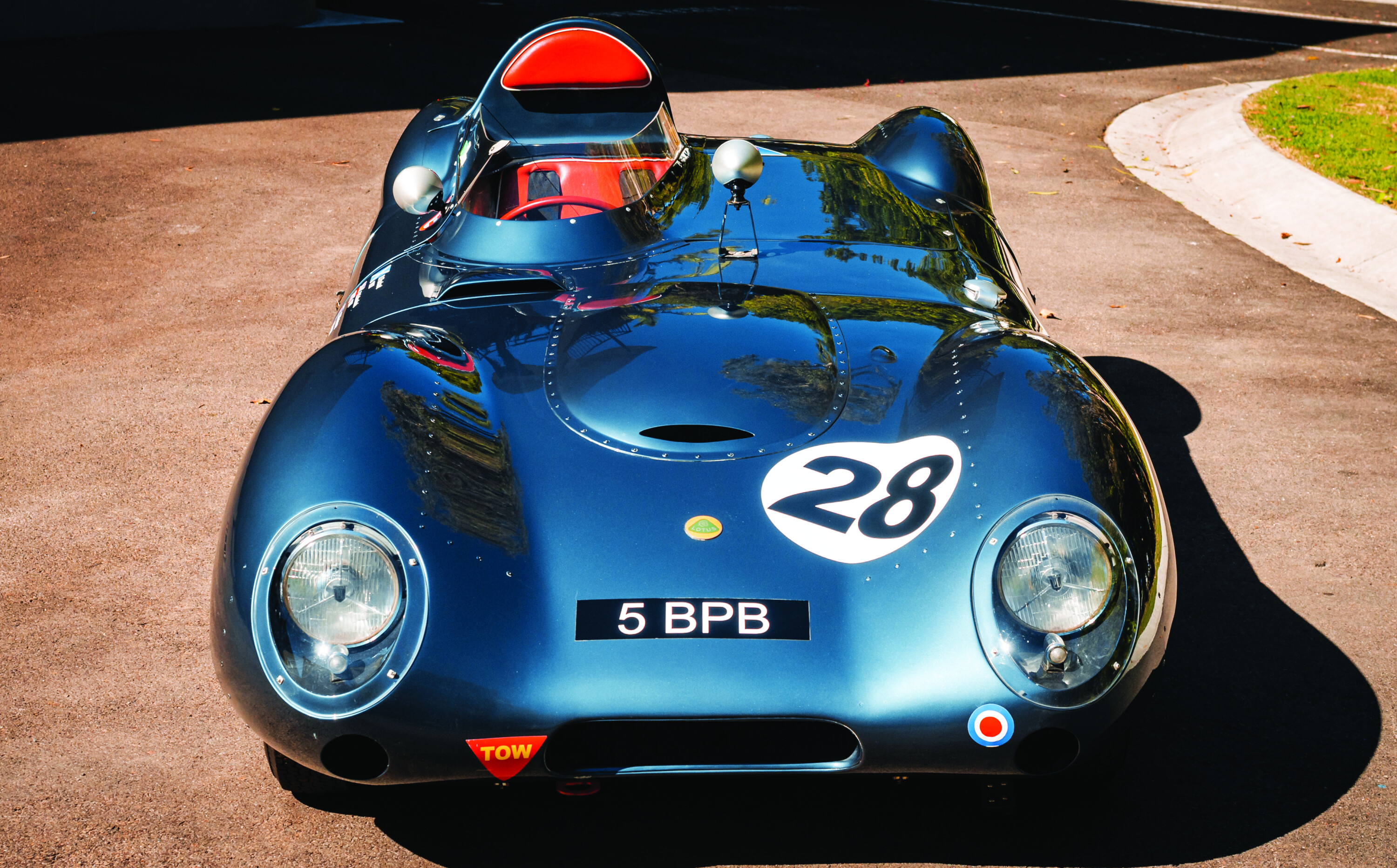
The other, chassis number 305 and our feature car, was first delivered to British race driver and team owner John Coombs.
It started its career with an illustrious 1957 race season in Europe driven by legendary steerers Ron Flockhart and Roy Salvadori as part of the Coombs race team. The drivers succeeded at circuits including Goodwood, Oulton Park, Silverstone, and Rouen in France.
The car was then offered for sale at the end of the season and snapped up by Australian racing driver Charlie Whatmore. He shipped the LM150 to Australia, where he raced it in events up and down the east coast, participating in club races at Lakeside, Toowoomba, Lowood, and Strathpine.
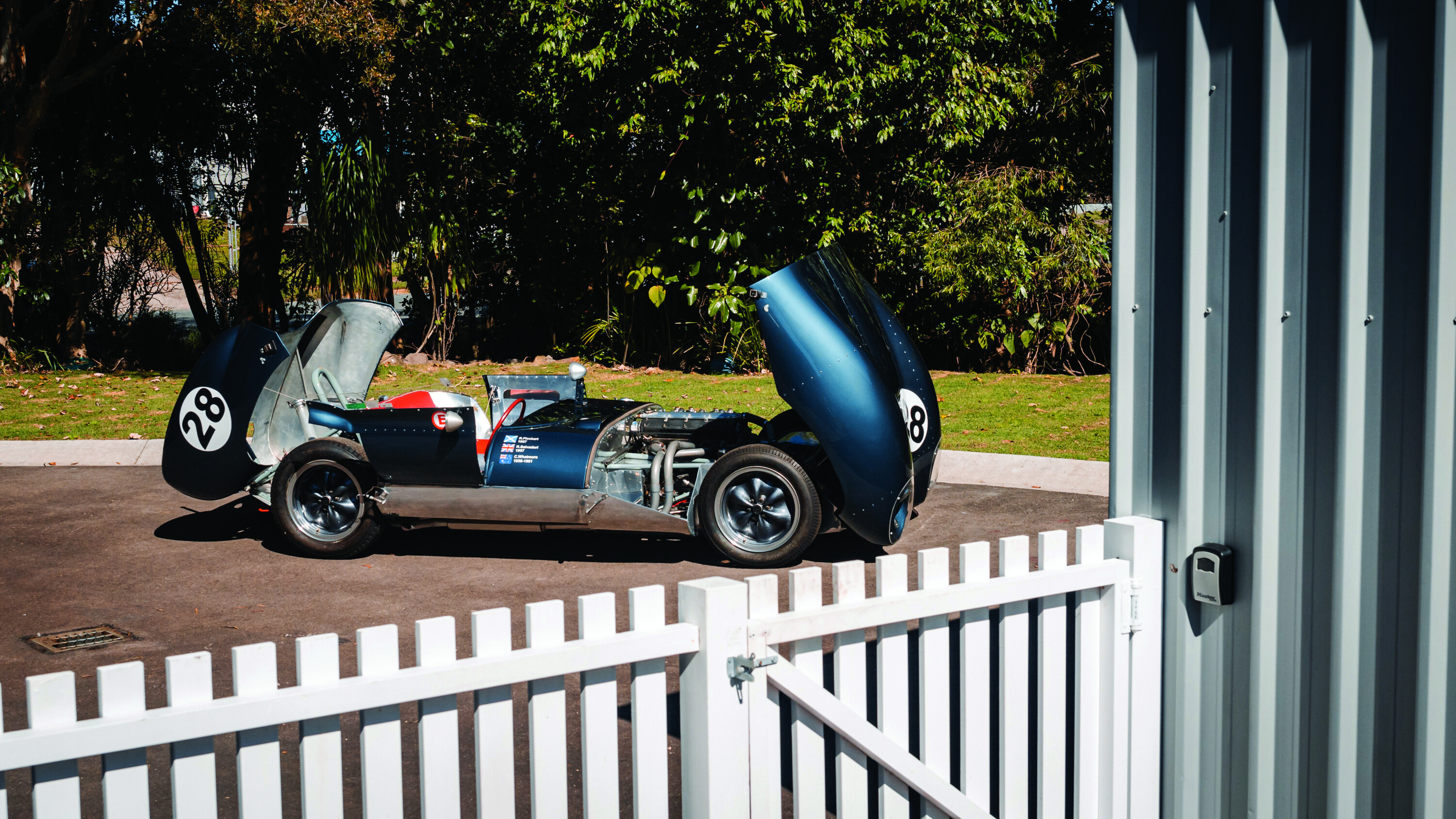
Whatmore also raced the LM150 at Bathurst twice and the Melbourne Grand Prix in 1958, continuing its pedigree appearances until a minor accident at Lakeside in May 1961 saw the car dismantled and parked up for many years.
The LM150 changed hands a few times over the decades and was eventually picked up in 1998 by the current owner in a somewhat derelict state. It was a complete car at the time, but not the correct configuration.
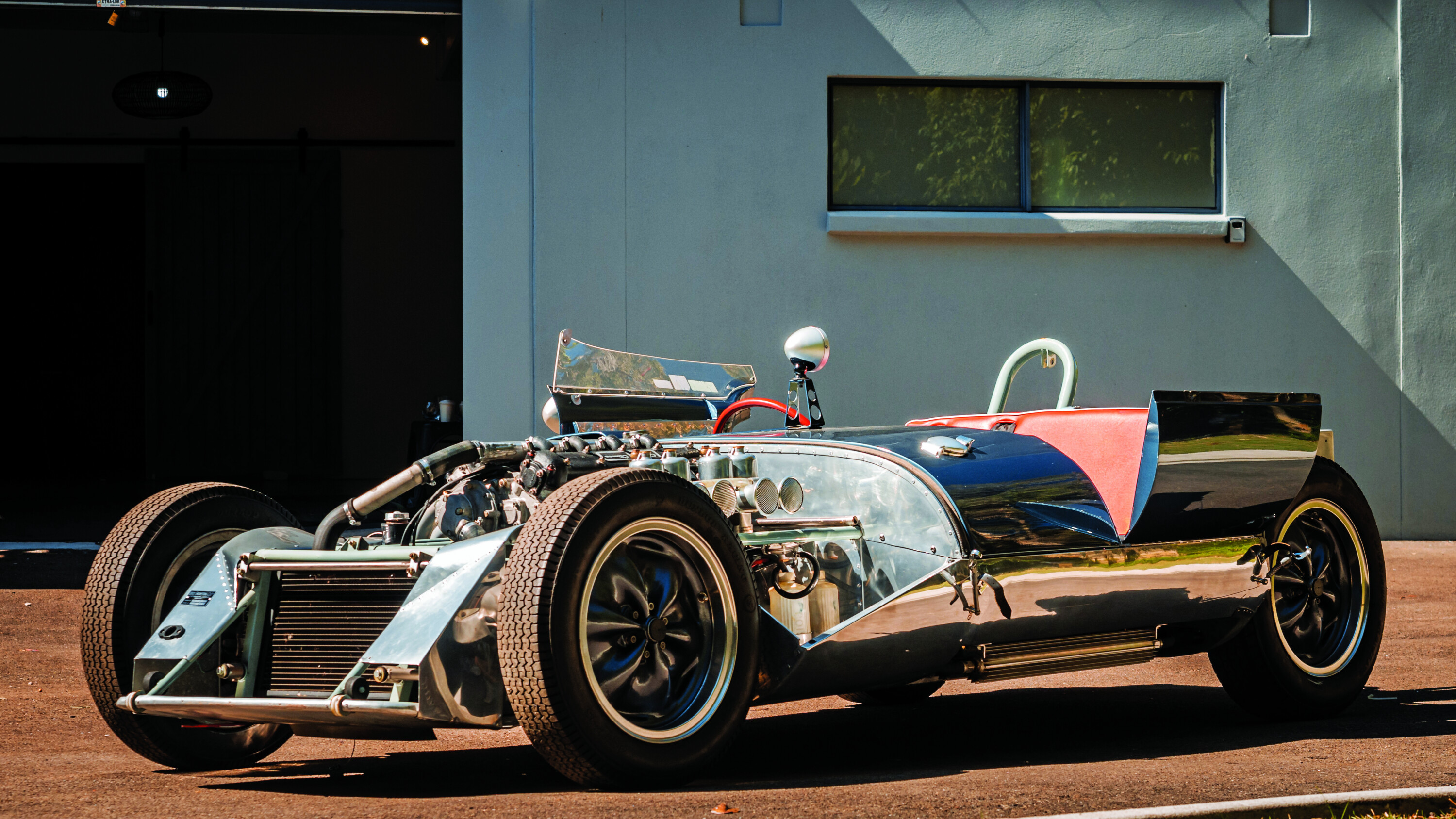
As with lots of older racers, many parts were missing or swapped out for non-genuine or incorrect items.
It was stripped down and meticulously restored over ten years, with every nut, bolt, and part replaced, restored, or remanufactured to the LM150 specification.
The owner completed a full research paper on the car, found genuine complete factory drawings to guide the process, and had regular contact with the Historic Lotus Register in England to establish what was required to return it to its original specification.
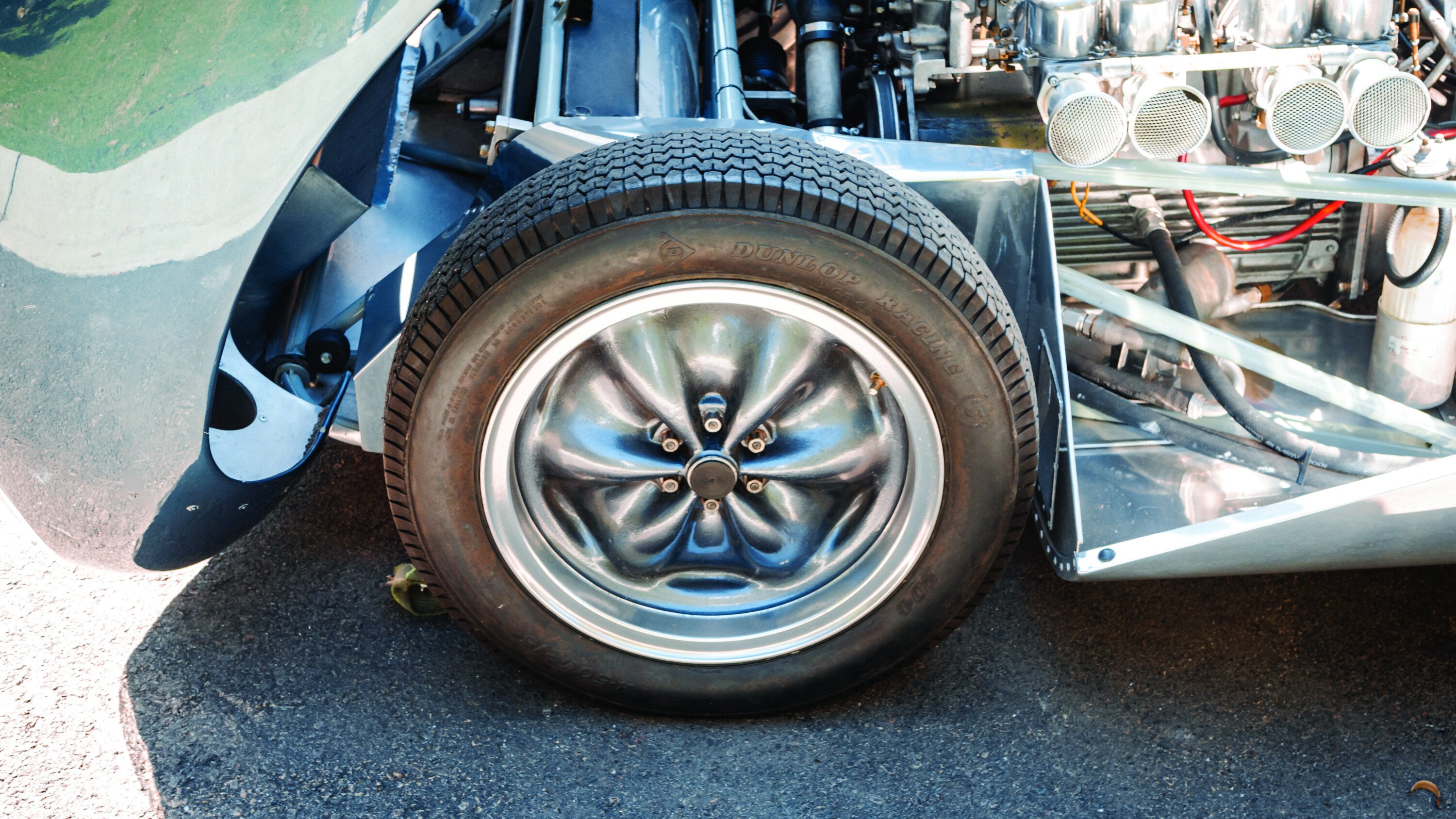
As luck would have it, the mechanics who had dismantled the car in 1961 had a cache of original parts from the 305 stored in Sydney – a restorer’s dream.
Impossible parts to source elsewhere, like the steering rack, braking system, fuel tank, differential, engine mounts, inlet manifold, gearbox internals, and even the original gear stick, were snapped up and restored to their original glory and configuration in the car.
Sourcing the correct Coventry Climax motor was particularly challenging, but the owner managed to build the engine from parts sourced from Australia and overseas. The block came from the UK through Bill Clarke in NZ. Meanwhile the head, crank, and cams came from Melbourne through Ray Gibbs, and the SU carburettors were sourced from England.
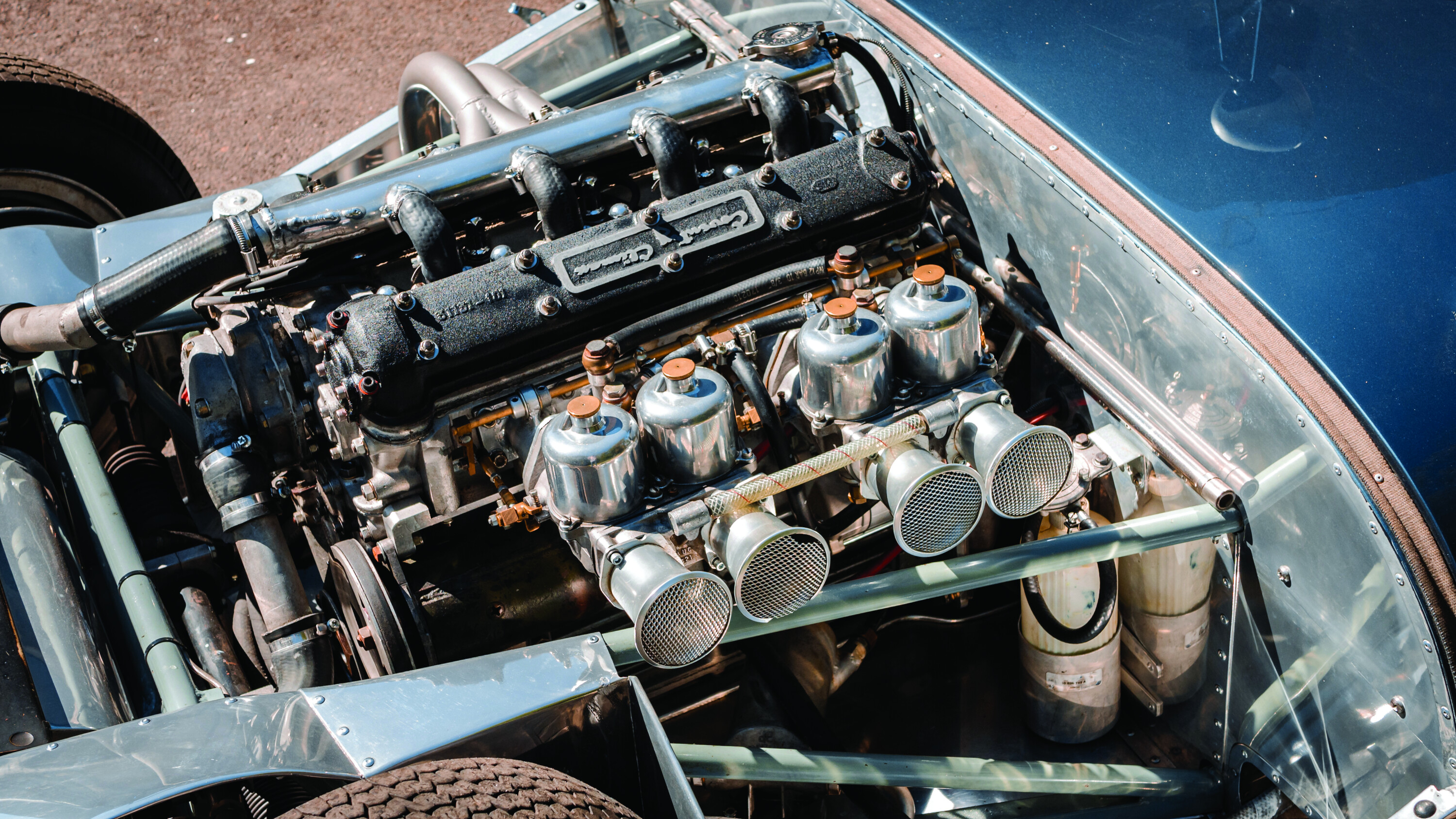
The engine’s tower gears proved difficult to find, so the owner convinced a UK mob to loan a second-hand set to copy here in Australia.
It took three years to source all the correct parts and assemble the engine to LM150 specification.
Ray Little from Body Craft Auto Restorations in Caloundra handled most of the fabrication and bodywork, resulting in a stunning finish. The body was fully restored, incorporating many of the original panels plus a second-hand front clip from English coachbuilders Pritchard and Williams. All finished off in the correct Ecuri Ecosse blue colour.
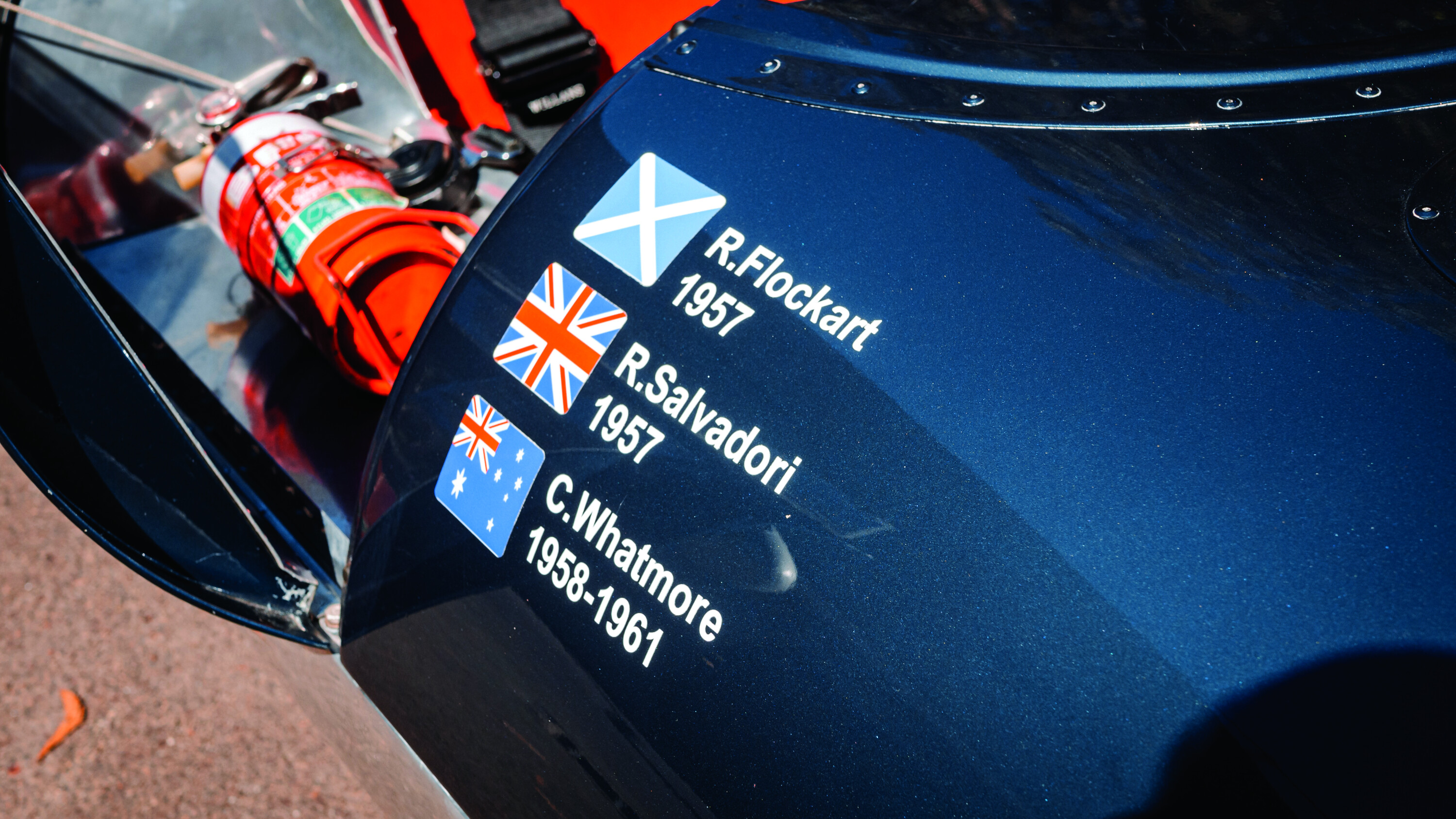
Completed in 2011 the car appeared at various shows and events, including a run in the demonstrator event at the Australian Grand Prix in 2013 and the 50th anniversary of the Lakeside circuit, a hark back to its appearance on the grid for the opening of Lakeside in 1961.
The LM150 305 was afforded an FIA Historic Technical Passport with the hologram proudly affixed to the dash and in 2016 it was issued with a CAMS group LB log book.
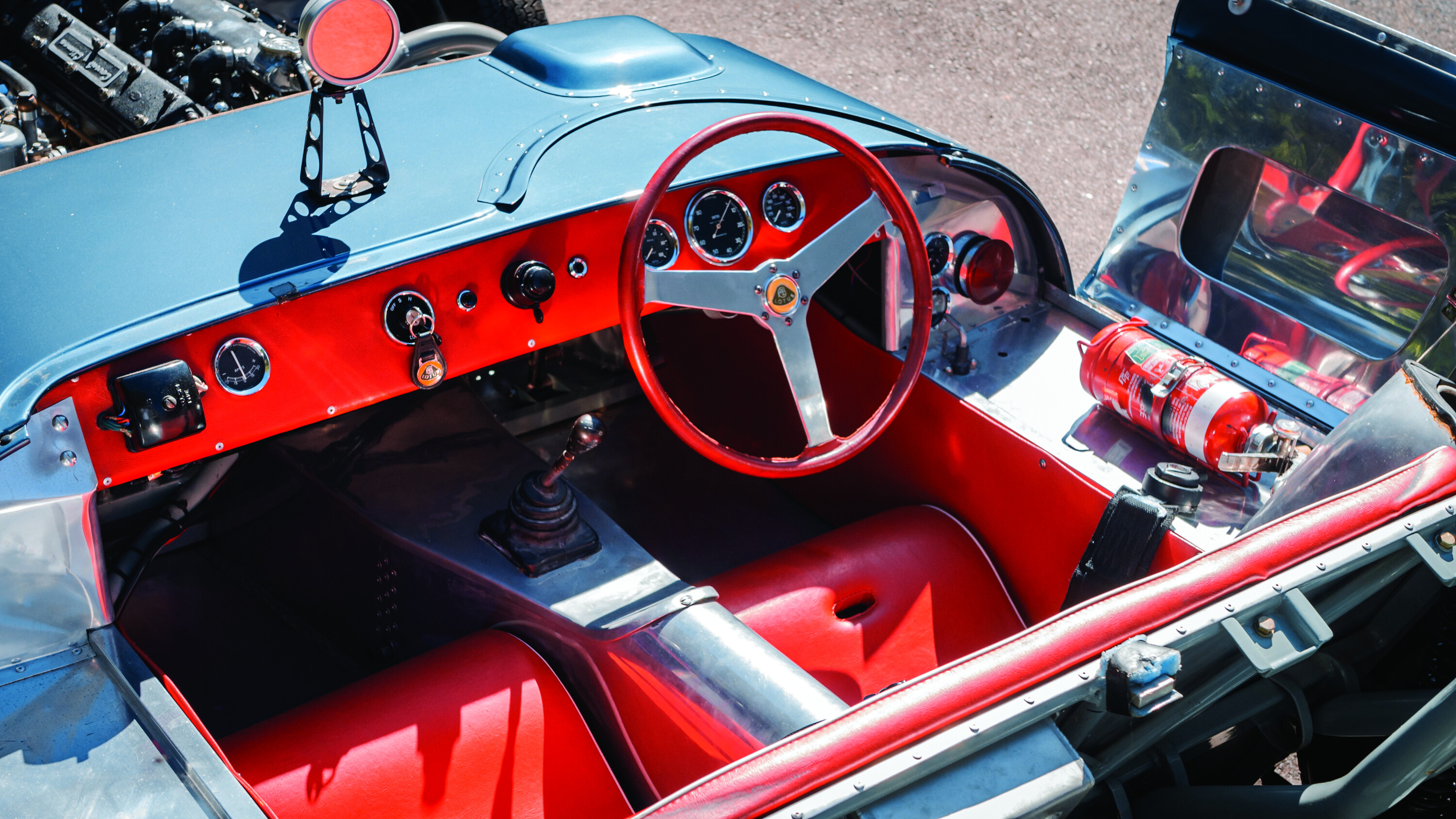
Overall, the Lotus Eleven LM150 is a rare and unique machine that will hopefully have lots more track time in its future.
Ed’s note: This car is now up for auction with Collecting Cars [↗]


